Automating Medical Billing with Custom Software
1. Introduction to Medical Billing Automation
1.1 Understanding the Need for Automation in Medical Billing
In today’s fast-paced healthcare world, AI-driven IT solutions streamline medical billing, replacing outdated manual processes. Cloud computing, software development, and IT services enhance efficiency, reducing errors and saving time. Cybersecurity and data security ensure compliance and protect sensitive patient information.
1.2 Overview of Manual vs Automated Medical Billing Processes
Manual medical billing processes can be as delightful as a root canal without anesthesia – time-consuming, error-prone, and a joy to absolutely nobody. On the other hand, automated medical billing processes swoop in like a hero in scrubs, streamlining tasks, reducing errors, and bringing a dash of efficiency to the billing battlefield. It’s like upgrading from a flip phone to the latest smartphone – once you make the leap, there’s no turning back.

2. Benefits of Custom Software for Medical Billing
2.1 Streamlining Billing Processes for Efficiency
Custom software for medical billing is like having a super-organized assistant who never takes a coffee break. It streamlines processes, cuts through the clutter, and ensures that billing tasks flow smoothly and swiftly. Say goodbye to the days of drowning in paperwork and hello to the streamlined efficiency of custom software.
2.2 Improving Accuracy and Reducing Errors
Custom software development for medical billing acts as a reliable IT solution, reducing errors and ensuring accuracy. AI-powered IT services, cloud computing, and cybersecurity enhance efficiency while safeguarding sensitive data.
2.3 Enhancing Revenue Cycle Management
Revenue cycle management is the heartbeat of any healthcare practice’s financial health. Custom software for medical billing helps keep that heartbeat steady and strong by optimizing billing processes, accelerating reimbursements, and ensuring a healthy cash flow. Think of it as a financial fitness trainer for your practice, keeping your revenue in tip-top shape.
3. Key Features of Automated Medical Billing Systems
3.1 Integration with Electronic Health Records (EHR) Systems
Smooth integration with EHR systems is key for automated medical billing systems to work their magic. This seamless connection ensures that patient information flows effortlessly between systems, reducing manual data entry and streamlining billing processes.
3.2 Automated Claim Submission and Processing
Gone are the days of tediously filling out claim forms by hand. Automated medical billing systems take the reins here, submitting claims electronically with the precision of a Swiss watch. This not only speeds up the billing process but also reduces the chances of errors that can lead to claim denials.
3.3 Real-time Eligibility Verification and Insurance Coverage Checks
Custom software development for medical billing streamlines claims processing and real-time insurance verification. IT solutions, cloud computing, and cybersecurity help reduce claim rejections, ensuring smoother reimbursements and efficiency.

4. Implementing Custom Software Solutions in Healthcare Practices
Assessing Practice Needs and Choosing the Right Software
Before adopting custom software development, assess your practice’s needs to ensure seamless integration. The right IT solutions, cloud computing, and IT services enhance workflows without disruption, improving efficiency and accuracy.
Training Staff for Successful Implementation
Introducing custom software into your practice is like introducing a new member to the team – proper training is key. Ensure that your staff receives comprehensive training on the new software to maximize its benefits and minimize any hiccups during the implementation process.
Monitoring and Evaluating Performance Metrics
Once custom software for medical billing is up and running, the journey doesn’t end there. Keep a close eye on performance metrics to track the software’s impact on efficiency, accuracy, and revenue cycle management. Regular evaluations can help identify areas for improvement and ensure that your practice continues to thrive with automated billing solutions.
5. Ensuring Compliance and Security in Automated Medical Billing
HIPAA Compliance and Data Security Measures
Automated medical billing requires strict HIPAA compliance, data security, and cybersecurity to protect patient information. IT solutions, cloud computing, and network security ensure secure and compliant data handling.
Auditing and Monitoring for Regulatory Compliance
Regular auditing and monitoring processes are essential to ensure that the automated medical billing system is in compliance with all relevant regulations. By conducting thorough audits and monitoring activities, healthcare providers can identify and address any potential issues proactively.
6. Case Studies: Successful Implementation of Custom Software in Medical Billing
Data Privacy and Ethical Concerns
As AI relies on sensitive patient data, ensuring data privacy and maintaining ethical standards are paramount. Implementing robust security measures and ethical guidelines is essential to build trust and safeguard patient information.
Integration of AI into Clinical Practice
Integrating AI into clinical workflows demands overcoming resistance and investing in IT consulting and specialized training. IT solutions, software development, and cloud computing enhance diagnostic accuracy and patient care efficiency.



